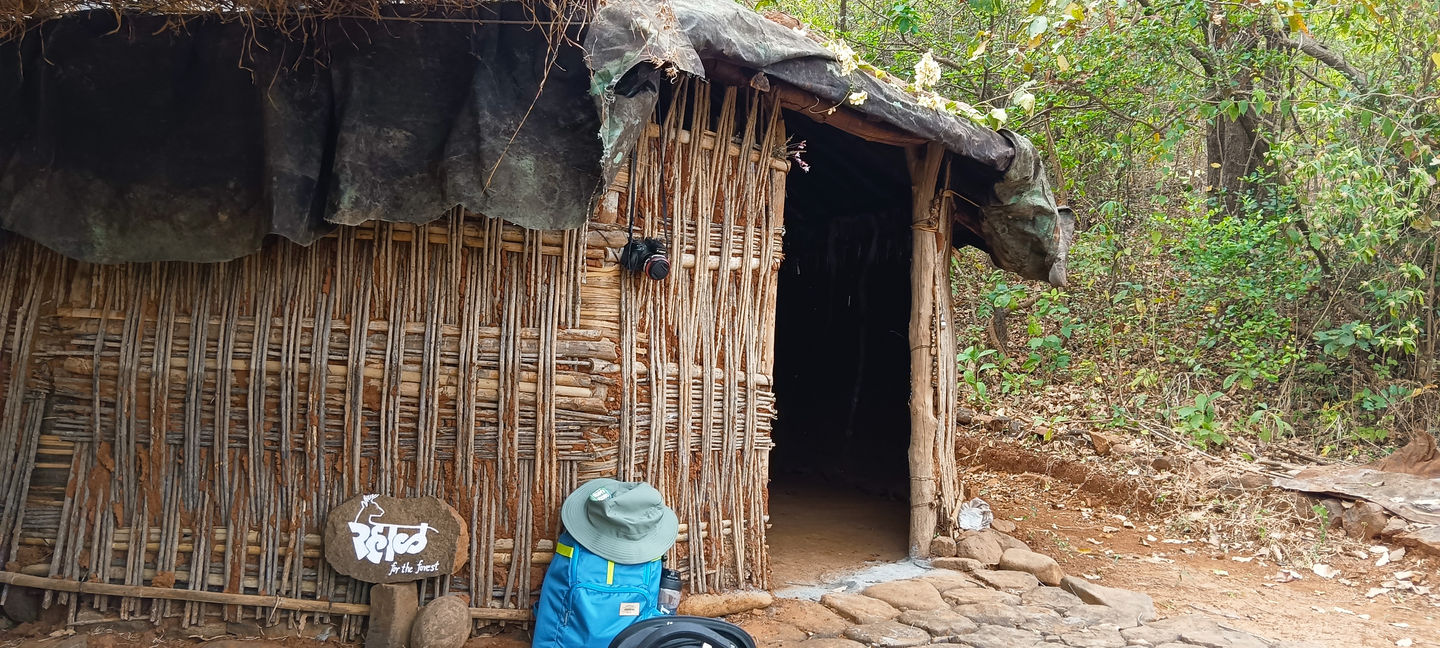
Restoration
Our founders have been working on eco-restoration since 2002 and actively on lands since 2005. Ecological restoration is a process of carefully planning-implementing activities for any degraded ecosystem to develop into a healthy, functioning ecosystem. It involves restoring the physical structure of the land to have successional development of the biotic community.
Currently we are working on two such projects in Sahyadri aimed at restoring the near original forest ecosystem.
Ranwa
Koyna Dam Catchment

An effort of Forest restoration was planned and initiated by oikos on land owned by Atul Kulkarni, Dheeresh Joshi and family in 2005. Slowly and steadily this land is progressing towards vegetation cover with increased soil fertility and moisture availability. The learnings are useful in the Sahyadri landscape and have been an inspiration to many. This project was covered in social media a number of times and our founders keep sharing the experiences with people to create awareness about the importance of restoration at landscape level.
The family handed over the land and its responsibility to Adhiwas in 2019 to continue eco-restoration along with research & documentation. It is also planned to involve researchers for various facets of ecology and invite people to experience the process of restoration enriching the landscape every year.
Presently, work at land includes fence maintenance, erosion control work, fire line management, pathway clenaing, seed dispersal, plantations, habitat development and few other timely tasks as needed. All being done with the help of local people.
Currently, the work on the land includes maintaining fences, erosion control, fire line management, pathway cleaning, seed dispersal, plantations, habitat development, and other necessary tasks, all carried out with the help of local communities.
The outcomes of this restoration process, documented until March 2025, include:
1. Soil Erosion Control: Measures have led to a reduction in surface runoff, increased vegetation growth, lowered soil surface temperature, improved soil texture and structure, increased soil moisture, and the restoration of soil organic matter, microbial activity, and biodiversity.
2. Protection by Live Hedges: These hedges have shielded the land from fires and grazing, while also providing food and habitat for local wildlife.
3. Biodiversity Boost: The introduction of appropriate native plant species has enhanced biodiversity, contributed to the conservation of rare, endangered, and locally threatened species, and strengthened the base of the food chain.
We now seek support from like-minded individuals to continue this vital restoration work. Areas where support is needed include:
• Water Management System: Installation of a solar-powered pump, overhead tanks, and a pipe system.
• Plantation of Native Forest Species: To advance the next phase of restoration.
• Research and Documentation: Regular monitoring and documentation of restoration outcomes.
• Facility Development for Researchers: Building necessary infrastructure for research activities.
• Maintenance of Existing Facilities: Upkeep of the borewell and field station
For more information on how you can donate, see our donations page.
Rahal
Panshet Dam Catchment

Rahal was conceived in 2008 and launched in 2014 by oikos, with a group of like-minded individuals serving as the founding members of the private sanctuary. The initiative seeks to offer a more sustainable land-use approach to the ‘second home’ concept, prioritizing conservation over entertainment in these areas.
The Adhiwas Foundation began implementing the work on the land in 2018, with support from RPF, and successfully protected a 62-acre parcel using a thorn fence. Since the start, baseline data collection for biodiversity and the assessment of various soil parameters, including soil organic carbon, temperature, and biomass, have been ongoing. Local communities have played a key role in land restoration efforts, including planting trees, constructing stream bunds, and creating firelines. The team continues to document fascinating biodiversity findings and carefully track all relevant parameters.
The first five to six years of the project, up until 2024, focused on establishing baseline data. For detailed insights, please refer to the report that highlights these findings, the work completed on the land, and various efforts made for biodiversity documentation. Moving forward, we are now concentrating on enhancing the physical parameters of the land, such as soil quality, soil moisture retention, and soil erosion control, utilizing local resources and collaborating closely with the local community. This ongoing work is crucial and needs to continue until 2030 to maximize its benefits and elevate the project to the next level.
In parallel, some research projects have been initiated with support from various organizations and individuals. Currently, the team is focusing on the IUCN red-listed species
Abutilon ranadei in Rahal and the surrounding areas, with funding from The Habitat Trust.
Get in touch with us to learn more about becoming a founding member of the Rahal Sanctuary. Also, visit our donations page to explore the various ways you can contribute and support our efforts.
Shirkoli
Village
While working on Rahal land, we expanded our work a bit on adjacent areas to help the community. Hill community is entirely dependent on springs as the main source of water. As a first step all springs along with their locations, use, duration, discharge were documented. Then with the help of senior villagers some springs that were gone under heaps of soil or rocks were identified and excavated to find the spring. These were then cleaned, secured with local stones to make them useful for the wildlife, people and their cattle in summer months.
Along with springs, around 50 stone bunds were installed by local villagers at appropriate locations that also helped as crossings during heavy rainy months.
This effort was supported by RPF in 2018-19.














